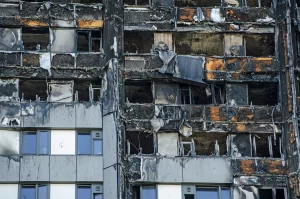COMBUSTIBLE CLADDING REGULATION (QLD)
The new Building and Other Legislation (Cladding) Amendment Regulation 2018 (Qld) has been in force since 1 October 2018. The regulation was enacted following the tragic fire at the Grenfell Tower in London (2017) and Lacrosse Building in Melbourne in 2014.
Applicable Buildings
The regulation applies to all privately-owned buildings which received development approval between 1 January 1994 but before 1 October 2018:
- All residential & commercial buildings 3 storeys or higher (other than single dwellings);
- Buildings of class 9 (health care buildings, schools, & aged care facilities) 2 storeys or higher.
The regulation requires all building owners to undergo a three stage process aimed at identifying and rectifying those buildings which may potentially contain combustible cladding.
Stage 1 – Registration
The deadline for registration with the QBCC was 29 March 2019. This process required all building owners of applicable buildings to register and complete an online checklist via the QBCC website. The checklist will identify whether the building is likely to be one with combustible cladding.
If you completed this checklist and no issues were identified, store your certification in a safe place and your requirements have been satisfied. If not, you move onto Stage 2.
The maximum fine for non-compliance with Stage 1 is 20 penalty units ($2,611).
Stage 2 – Building Industry Professional Statement
The next phase deadline ends on 29 May 2019. If your building has been identified as containing combustible cladding you have until this date to provide the QBCC with a statement in the approved form from an industry professional about whether or not the building may be an affected private building.
The maximum fine for non-compliance with Stage 2 is 20 penalty units ($2,611).
Stage 3 – Fire Safety Risk Assessment
The final stage in the compliance process is to obtain a fire risk assessment. The assessment is to be carried out by a qualified fire engineer to determine the safety of the building. The assessment may either identify the building as safe or that rectification works will be required.
The building owner must provide the QBCC the name and registration number of the fire engineer by no later than 27 August 2019.
Final reports including combustible cladding checklist, report & statement in the approved forms must be delivered to the QBCC no later than 3 May 2021.
Maximum penalties applicable to this stage is 165 penalty units ($21,540.75).
Display of relevant information following assessment
If your building has been identified as containing combustible cladding you must:
- Display a notice in the approved form for the building in a conspicuous position near the main entry point for the building for such time until the building is deemed compliant; and
- Where the building is a body corporate, each lot owner and tenant must be provided with a copy of the relevant notice;
- Provide a copy of the relevant assessment & reports to all potential buyers of the relevant building or lot.
Contracts for Sale
Section 223 of the Body Corporate and Community Management Act 1997 requires sellers to disclose all latent or patent defects in common property to potential buyers that the seller is aware of or should have known.
Given that the requirements under the new regulation require body corporates to issue to existing lot owners the relevant notice of non-compliance, sellers would have difficulty in asserting any excuse for non-disclosure.
It would be prudent of all buyers, especially those purchasing in body corporate, to perform full comprehensive searches to identify any non-compliant cladding notices, future rectification works & special levies.
If you have any queries about this regulation and how it may impact you, please contact our legal team at bytherules on 1300 223344.
Written by Amy Thomas, Solicitor/Franchise Owner, bytherules Mooloolaba


